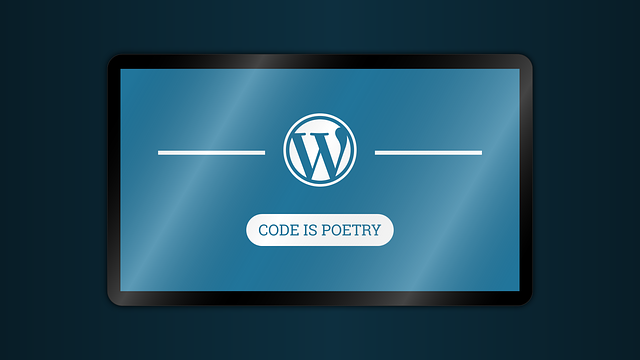Internal linking in WordPress, particularly through strategic contextual link suggestions, significantly boosts user experience and SEO. By integrating relevant links within content like FAQs and glossaries, developers create a network that guides users and search engines through the site's information. This approach enhances site architecture, improves rankings, increases click-through rates, and fosters engagement. Effective strategies involve prioritizing relevance, using descriptive anchor text, and balancing link numbers. Measuring key metrics such as click-through rate (CTR) helps assess the strategy's success and guides continuous optimization for better user experience and SEO performance.
Internal linking is a powerful strategy to enhance user experience and search engine optimization (SEO). This article explores the art of optimizing Frequently Asked Questions (FAQs) and SEO glossaries through strategic internal linking. We delve into ‘Understanding Internal Linking’ as the cornerstone of creating relevant contextual links, specifically for WordPress sites. By crafting intelligent contextual link suggestions, you can improve readability and boost SEO performance, ensuring your content resonates with users and search engines alike.
- Understanding Internal Linking: The Foundation of Contextual Links
- Optimizing FAQs and SEO Glossaries for Better User Experience
- Why WordPress Sites Benefit from Strategic Internal Linking
- Crafting Relevant Contextual Link Suggestions
- Enhancing Readability and SEO with Internal Links in FAQs/Glossaries
- Measuring Success: Tracking the Impact of Internal Linking Strategies
Understanding Internal Linking: The Foundation of Contextual Links

Internal linking is a fundamental strategy for any website’s SEO (Search Engine Optimization) efforts, especially when it comes to enhancing user experience and improving site architecture. At its core, internal linking involves creating contextual links within your content that connect relevant pages on your WordPress site. These contextual link suggestions aim to guide users and search engine crawlers through your website’s information ecosystem.
When implementing a strategic internal linking approach, consider the relevance and value of each link. Contextual link suggestions should be tailored to provide a seamless flow of information, ensuring visitors find what they’re looking for without frustration. This technique not only helps users navigate your site but also signals to search engines that your content is well-structured and informative, leading to better rankings over time. A tutorial on contextual link suggestions can offer valuable insights into crafting an effective strategy that aligns with both user needs and SEO best practices.
Optimizing FAQs and SEO Glossaries for Better User Experience

Optimizing Frequently Asked Questions (FAQs) and Search Engine Optimization (SEO) glossaries enhances user experience by providing clear, concise answers to queries. Incorporating contextual link suggestions for WordPress within these sections improves navigation and engagement. By strategically placing links to relevant content, users can find additional information seamlessly, fostering a more interactive and informative session on your site.
Contextual link suggestions SEO and optimization techniques like these not only benefit visitors but also reinforce the website’s authority in search engine rankings. A contextual link suggestions tutorial might guide developers and content creators on integrating these links naturally within FAQs or glossaries, ensuring a harmonious user journey without compromising readability.
Why WordPress Sites Benefit from Strategic Internal Linking

WordPress sites can greatly benefit from strategic internal linking, a powerful technique that enhances user experience and improves search engine optimization (SEO). By implementing contextual link suggestions for WordPress, site owners can create a network of relevant pages, guiding users through their content and helping search engines understand the site’s structure. This strategy involves placing links within the context of related content, ensuring they offer value to readers while also contributing to the overall SEO efforts.
A contextual link suggestions tutorial or strategy is particularly useful for WordPress as it allows for dynamic and diverse internal linking. Unlike static HTML sites, WordPress enables developers to seamlessly integrate links within content, such as in blog posts, pages, or custom post types. This flexibility facilitates the creation of a seamless user journey across the site, with each page supporting and directing users towards others based on their interests or search queries. As a result, strategic internal linking can boost site visibility, improve click-through rates, and enhance overall website performance in search engine results.
Crafting Relevant Contextual Link Suggestions

When crafting contextual link suggestions for WordPress FAQs or SEO glossaries, relevance is key. Each internal link should offer a clear benefit to the reader by providing additional information that directly relates to their initial query. For instance, if a user is reading an article about ‘SEO Best Practices’, a contextual link to a post on ‘Optimizing Meta Descriptions’ would be valuable. The suggestion should seamlessly integrate with the existing content, offering a natural flow of knowledge and keeping readers engaged.
A successful contextual link suggestions strategy involves understanding your audience’s needs and behavior. Utilize contextual link suggestions tips like analyzing user interaction data to identify related content that often catches their interest. This information can then be leveraged to create an optimized contextual link suggestions optimization strategy, ensuring that every internal link not only directs users to relevant resources but also enhances their overall search experience on your website.
Enhancing Readability and SEO with Internal Links in FAQs/Glossaries

In FAQs or SEO glossary sections, internal links play a pivotal role in enhancing both readability and search engine optimization (SEO). By strategically placing contextual link suggestions within these sections, readers can navigate through related content seamlessly, improving their overall experience. Each link should offer a clear and concise reason for the reader to click, providing valuable insights or expanding on concepts mentioned. This not only facilitates easier understanding but also signals to search engines that your content is comprehensive and interlinked, boosting its credibility and ranking potential.
Contextual link suggestions in WordPress can be implemented as part of a well-crafted FAQ or glossary entry. For instance, if discussing a complex term, include a contextual link to an accompanying article that offers a detailed explanation. Tips for effective implementation include ensuring links are relevant and provide added value, using anchor text that accurately reflects the linked content, and balancing the number of links per section to avoid clutter. A tutorial on crafting these contextual link suggestions can be found within your website’s resources, guiding users through the process step-by-step.
Measuring Success: Tracking the Impact of Internal Linking Strategies

Measuring the success of internal linking strategies is crucial to understanding their impact on user experience and search engine optimization (SEO) performance. By tracking key metrics, website owners can gauge the effectiveness of contextual link suggestions for WordPress sites. One essential metric is click-through rate (CTR) from internal links, which indicates how often users click on a link within your site’s content. A higher CTR suggests that internal links are engaging and relevant to your audience.
Additionally, monitoring user behavior after clicking on internal links can provide valuable insights. Using analytics tools, you can track session duration, bounce rates, and the number of pages visited per session for linked pages. These contextual link suggestions tips help identify which content is resonating with users and guiding them to valuable resources within your site. Such data-driven insights inform your contextual link suggestions strategy, ensuring that internal links enhance user engagement and ultimately contribute to improved SEO rankings.
